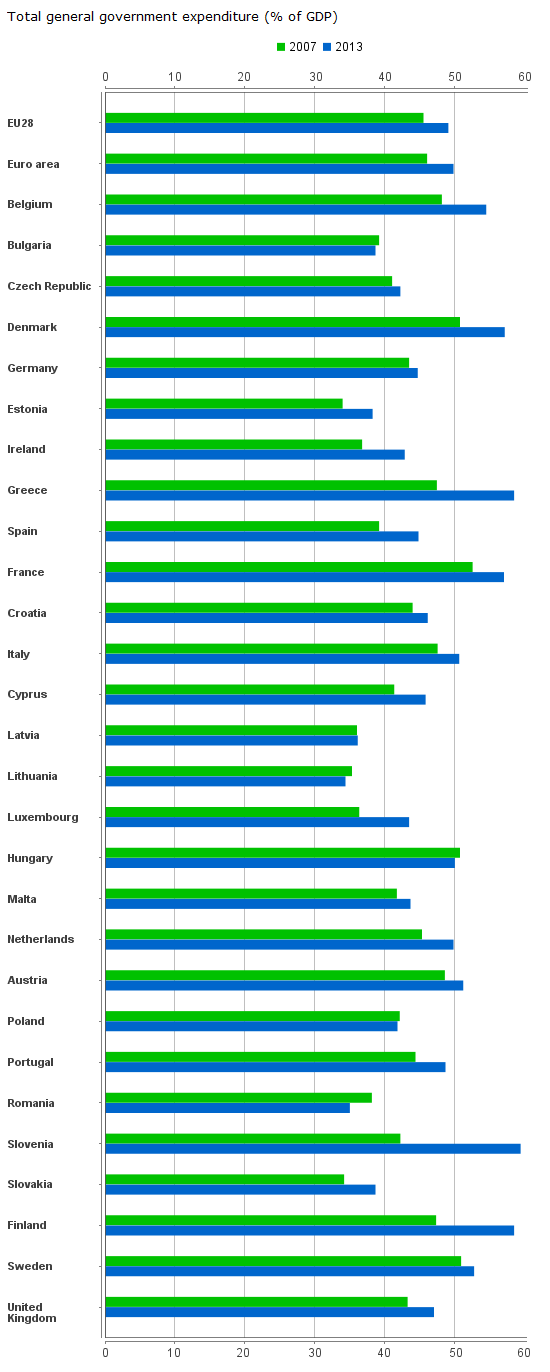

Accessibility tools
Service tools
Language
Navigation path
The importance of public expenditure in the EU economy has risen since the crisis and public spending now accounts for almost half (49.0%) of GDP each year.
Ensuring that public money is spent wisely and effectively in support of public policies is one of the major lessons of the crisis.
A recent Commission staff paper 'Public Spending Reviews: design, conduct, implementation' highlights the valuable role that well-designed government spending reviews can play.
Total general government expenditure in the EU reached 49.0% of GDP, averaging €12,617 per person in 2013.

Source: Eurostat, Public Spending Reviews: design, conduct, implementation
The picture varies across the EU, reflecting national preferences and political decisions. In six Member States, public spending accounts for more than 54% of GDP, while in another six, the proportion is between 34% and 39%.
In the EU as a whole, the public expenditure-to-GDP ratio increased by 3.5 percentage points between 2007, the year preceding the crisis, and 2013. Four Member States, however, have managed to stabilize or even reduce their expenditure-to-GDP ratios over that period.
A major policy lesson stemming from the crisis is the need to enhance expenditure performance i.e. the concordance between funding decisions and policy priorities, and their value for money.
Spending reviews which seek to align expenditure allocation with national policy priorities can be a useful tool in designing smart fiscal consolidation strategies.
A recent Commission staff paper 'Public Spending Reviews: design, conduct, implementation' highlights the valuable role that well-designed government spending reviews can play.
Additional tools